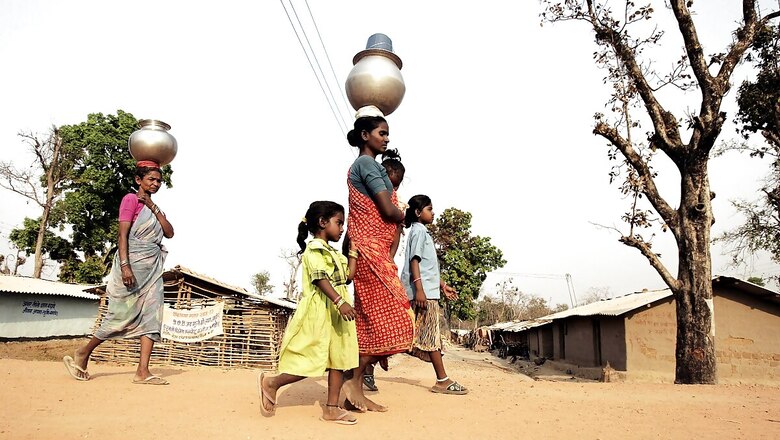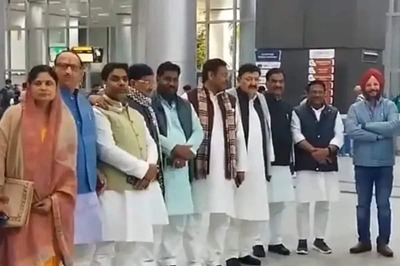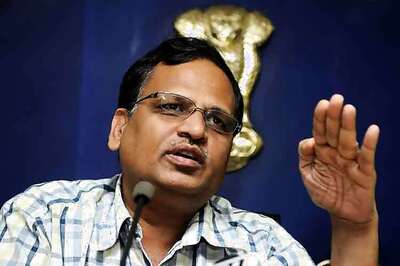
views
The COVID-19 crisis is changing the world and India. Besides changing social behaviour, it is changing the way we look at our healthcare system. Right now, the government is well aware of its responsibilities and is doing its utmost to tackle the crisis on a war footing. Each arm of the government has just one priority—to get the country out of this pandemic. Fighting an air-borne, invisible enemy that creeps into our homes, offices and villages can only be possible with the active participation of all citizens. This is the change: from top-down, government-mandated to lateral, citizen-driven.
It is not possible for a government to claim any sort of control over a pandemic. For that to happen, it would need social change at various levels. Urban India has recognized the importance of wearing a mask, social distancing, testing and vaccination. Rural India is struggling and hesitating to get tested, treated or vaccinated for COVID-19. Disinformation and myths abound on testing and vaccines in villages. We should make a conscious effort at an individual level to talk to our friends and relatives in villages about the facts on COVID-19.
Hesitancy: A Challenge in Rural India
Testing hesitancy in rural areas is making faster detection and subsequent containment a challenge. Unlike in urban areas, villages can actually be swiftly turned into containment zones—the panchayats and the village social structures make it possible. But that can happen only if the sarpanch and the village recognize and accept the challenge of fighting COVID-19. The virus cannot be tackled if there is hesitancy or denial. Every effort by the government will falter if everyone does not get involved. Better communication at every level is the only way out and here we need the support of my friends in the opposition parties too.
I would implore all political parties to come forward and work with the government in this war against the coronavirus. This is a time for them to show leadership, not indulge in politicking and nitpicking. There will be a lot of time for the latter when the elections approach. Now we have to combine forces to reach the hinterlands, to explain and help common citizens fight the virus.
People need to understand the symptoms of the disease and take appropriate steps. If the infection is mild, then it tends to go away on its own in some time. If it’s a case of moderate infection, then medication and treatment are needed. Only in the case of severe infection does the patient need hospitalization. In mild to moderate cases, it is important that the caregiver/s home-quarantine the patient; to do that properly, it is important everyone understands and follows the standard operating procedure.
What is Haryana Doing
Under chief minister Manohar Lal Khattar, Haryana is carrying out an awareness exercise on home quarantine. Also, 8,000 teams have been formed across Haryana to visit and carry out sanitization, testing and ensure quarantine protocols are followed. Mobile vans and minibuses have been allocated to each district; these will be assigned to isolation centres in rural areas. District hospitals across the state have been asked to install oxygen plants; additional beds have been provisioned. The state is working on a war footing, coordinating with the Air Force for the supply of oxygen tankers to meet the requirement in big cities. Every MLA and senior bureaucrat has been assigned responsibility for district-level coordination with hospitals and patients. Doctors and nurses are working long hours to treat patients.
Haryana has empowered the panchayats to take decisions regarding lockdown and entry of outsiders to prevent the spread of COVID-19. Under the theekri pehra, they can also levy a fine if they find people not maintaining social distancing. Other states can also follow this model.
How to Flatten the Curve
But to flatten the curve, people need to follow standard protocol. More importantly, vaccination is a must. In rural areas, this is a huge concern—the demand for vaccine is low and not picking up either. With vaccine hesitancy, I have noticed two concerns: one is of safety, the other is of efficacy. Trust issues exist among some communities about the vaccine, fuelled by misinformation on social media. These should be handled sensitively and exhaustively by the government.
We have been working extra hard in rural areas to communicate proactively and bust the myths around COVID-19. It will serve the country’s interest better if every aware citizen becomes a part of this exercise. With technology, it is possible to relay correct information to the rural audience on WhatsApp and other social media platforms. Individual-to-individual or peer-to-peer outreach is a much more effective way than any government directive to dispel myths. People in urban areas have experienced two waves of the COVID-19 pandemic; in many ways, they understand the havoc it wreaks. Last time the rural areas were spared, but this time the second wave has affected them much more. This wave seems to be spreading at a faster pace compared to the previous one.
The virus is causing death and despair, yet it is important that we do not let it affect our mental fortitude. It is very important to help and seek help in these times of helplessness, and face the crisis as a community rather than struggle with it as individuals. Sharing what we have learnt about how this virus is mutating and changing behaviour is crucial to anticipate, plan, and fight back. If each one of us decides to help, this community spirit of India will help change the country in many ways.
We need to learn to live with the virus—it has already been with us for more than a year. Certain precautions must continue to be a part of our lives in the near future.
Read all the Latest News, Breaking News and Coronavirus News here. Follow us on Facebook, Twitter and Telegram.

















Comments
0 comment